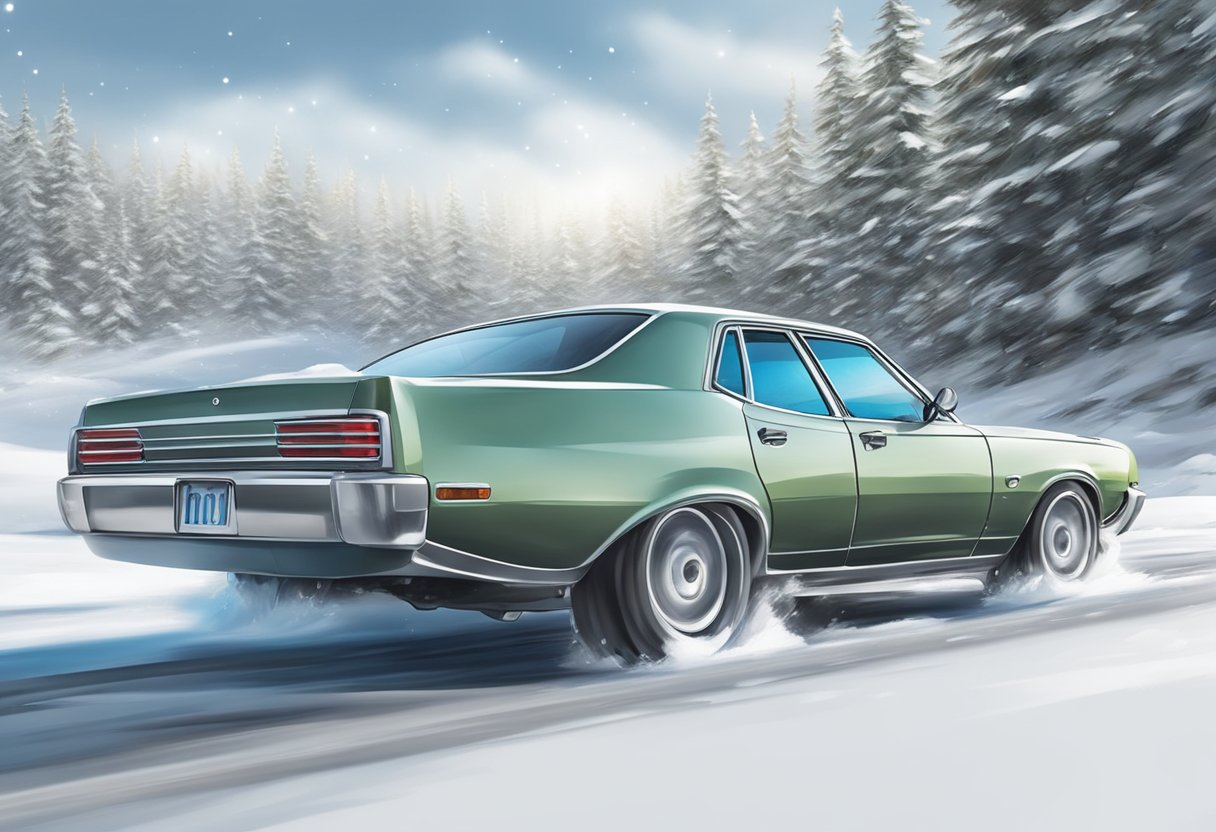Limited slip differentials (LSDs) are a standard upgrade for high-performance cars. But are they helpful in snowy conditions? Let’s find out.
You might think LSDs are perfect for snow and ice because they evenly share power between the wheels, reducing slipping. But it’s not that simple.
LSDs are better than open differentials but may not be ideal for snow and ice. Some experts believe that LSDs can even make winter driving harder. In the following sections, we’ll explain why LSD might not be the best choice for snowy roads.
How Does Limited Slip Differential Work in Snow

Limited Slip Differential (LSD) is helpful when driving in the snow. It’s all about ensuring your car gets good traction on slippery roads.
With LSD, power goes to both wheels, but not equally. If one wheel starts to slip, LSD sends more power to the wheel still gripping the road. This helps the car keep moving forward.
LSD’s job is to send power to the wheel with the best grip so your car doesn’t get stuck in the snow. Unlike an open differential that lets one wheel spin freely, LSD ensures both wheels keep moving, which is great in snowy conditions.
But remember, LSD isn’t a magic fix for snowy driving. You must still drive safely by slowing down and keeping a reasonable distance from other cars.
|| More about LSD:
|| Traction Control vs Limited Slip Differential
Advantages of Limited Slip Differential in Snow

When you’re driving in snowy conditions, it can be challenging to keep your car in control. Limited slip differentials (LSDs) can be a big help, primarily if you often deal with snow and ice.
1. Improved Traction
LSDs give you better traction in the snow. They send power to the wheels that grip the road best, so you don’t slide around. This is super important when roads are slippery.
2. Better Control
LSDs also help you stay in control. They ensure power goes to both wheels equally, so your car doesn’t slide or skid. It is a big deal on slippery roads where losing control can be dangerous.
3. Less Wheel Spin
LSDs reduce wheel spin in the snow. When a wheel loses traction, it can spin freely, and that’s terrible news. LSDs fix this by sending power to the wheels that grip the road so your wheels stay in check.
Disadvantages of Limited Slip Differential in Snow

Using a limited-slip differential (LSD) in the snow can be helpful. Still, it’s not a perfect solution for all snowy situations.
1. Overconfidence Warning
LSDs are great but don’t work miracles on super icy or intense snow. Sometimes, they make you feel too confident when you’re driving. Staying cautious and adjusting your driving to the slippery conditions is crucial.
2. Possible Increased Tire Wear
Using LSDs in snowy conditions can make your tires wear out faster because of extra friction. If you often drive in the snow, this can become a problem.
Ensure your tires are in good shape and rotated regularly to reduce the issue. Using winter tires made for snow and ice can also help lower wear and make your winter driving safer.
Using Limited Slip Differential in Snow: What to Think About
When you want to use a limited-slip differential (LSD) in the snow, you have some things to remember.
1. Types of LSDs
There are different types of LSDs. Some are mechanical, using gears to move power to the wheel with the most grip. Others are electronic, using sensors and computer-controlled clutches to do the job.
2. Your Vehicle Matters
Make sure your LSD works well with your vehicle’s drivetrain system. LSDs work best with four-wheel or all-wheel drive systems because these systems send power to all four wheels, giving you a better grip on slippery roads. But you can also use LSDs with two-wheel drive systems, even though they might not work either.
3. Cost Counts
LSDs can be pricey, especially if a professional mechanic has to install them. But they could be a wise investment if you often drive in snowy or slippery conditions.
Tips for Snow Driving with Limited Slip Differential
Driving with a limited slip differential in the snow can be better if you follow these tips:
- Smooth Acceleration: Avoid pressing the gas pedal too hard and too fast. Smooth and gradual acceleration helps prevent your wheels from spinning and losing grip on the slippery snow.
- Keep a Safe Distance: Snow and ice can make it hard to stop quickly. Stay a good distance from other vehicles to give yourself enough time and space to react if something unexpected happens. Pay attention to the drivers around you and adjust your speed and position to avoid accidents.
- Drive Straight: Try to keep your car moving in a straight line as much as possible. Sudden turns or quick changes in direction can make your wheels slip. Use gentle braking and steering to keep control and avoid skidding or sliding.

Leave a Reply